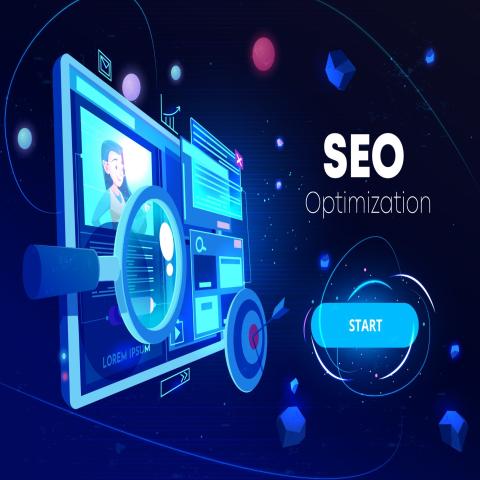In the competitive digital world, having a visually appealing website isn’t enough. To rank higher on Google and attract organic traffic, your website needs to be optimized for search engines using on-page SEO On-page SEO focuses on improving the elements of your website that search engines use to crawl, understand, and rank your content.
15-step on-page SEO checklist
This 15-step on-page SEO checklist is designed to guide you through everything you need to optimize your site. Whether you’re a beginner or an experienced webmaster, follow these steps to boost your rankings and drive high-quality traffic to your website.
1. Perform Comprehensive Keyword Research
The foundation of on-page SEO lies in keyword research.
Keywords are what connect your content to user queries on search engines.
How to Implement:
- Use
tools like Google Keyword Planner, SEMrush,
or Ahrefs to find relevant keywords.
- Focus
on long-tail keywords like “best SEO checklist
for beginners”. These are less competitive and highly targeted.
- Understand search
intent: Are users looking for information, solutions, or products?
Choose keywords that match their intent.
- Look
for keywords with high search volume and low
competition.
- Identify secondary
keywords and LSI (Latent Semantic Indexing) keywords that relate
to your main keyword.
2. Craft an SEO-Optimized Title Tag
The title tag is the clickable headline
that appears on search engines. It’s one of the first things search engines and
users see.
How to Implement:
- Place
your target keyword at the beginning of the title.
- Keep
the title tag within 50-60 characters to avoid truncation
on Google SERPs.
- Make
the title compelling and actionable to encourage clicks.
3. Write a Click-Worthy Meta Description
A meta description is a short text
displayed under the title tag in search results. While it doesn’t directly
influence rankings, it can improve your click-through rate (CTR).
How to Implement:
- Keep
the meta description under 155-160 characters.
- Include
your primary keyword naturally.
- Highlight
the benefits or solutions your content provides.
- Use a
call-to-action (CTA) like “Learn More,” “Get Started,” or “Read
Now.”
4. Optimize the URL Structure
URLs should be clean, descriptive, and optimized for both
users and search engines.
How to Implement:
- Use short
and readable URLs (ideally 3-5 words).
- Incorporate
your primary keyword in the URL.
- Use
hyphens (-) to separate words. Avoid underscores (_).
5. Use Header Tags for Content Hierarchy
Header tags (H1, H2, H3, H4) structure your content
and make it easier for search engines and users to navigate.
How to Implement:
- Use H1 for
your main title (only one H1 per page).
- Use H2s for
subheadings and H3s-H4s for subsections.
- Include
your target keywords in the headers where appropriate.
- Break your content into smaller, scannable sections for readability
Example:
H1: On-Page SEO Checklist
H2: Step 1: Perform Comprehensive Keyword Research
H3: Tools for Effective Keyword Research
6. Optimize Content for Search Intent
High-quality content that satisfies search intent will rank
higher on Google.
How to Implement:
- Match
your content to user intent: informational, commercial, or
transactional.
- Focus
on E-E-A-T principles (Expertise, Experience,
Authoritativeness, Trustworthiness).
- Use target
keywords naturally throughout your content.
- Ensure
the content is valuable, engaging, and actionable.
- Include multimedia
elements like images, videos, and infographics to keep users
engaged.
7. Add Internal Links
Internal links connect pages within your website, helping
users and search engines discover related content.
How to Implement:
- Link
to relevant pages on your website using descriptive
anchor text.
- Ensure
internal links flow naturally within the content.
- Avoid
overloading a page with too many links.
- Example: Check
out our guide on website SEO strategies.
8. Include External Links to High-Authority Sources
Linking to credible external websites adds value to your
content and improves trustworthiness.
How to Implement:
- Link
to high-authority, relevant websites (e.g., Wikipedia, government sites,
or industry leaders).
- Use nofollow
tags for promotional or paid links.
- Ensure
external links open in a new tab to retain visitors to
your site.
Images can enhance user experience, but they need
optimization to improve site performance.
How to Implement:
- Use
descriptive file names for images (e.g., on-page-seo-checklist.png).
- Add alt
text with target keywords to help search engines understand the
image.
- Compress
images using tools like TinyPNG or Squoosh for
faster load times.
- Use
modern formats like WebP for improved performance.
10. Improve Page Load Speed
Page speed is a major ranking factor and directly affects
user experience.
How to Implement:
- Use
tools like Google PageSpeed Insights or GTmetrix to
analyze your page speed.
- Minimize HTTP
requests and enable browser caching.
- Optimize
images and reduce file sizes.
- Use
a Content Delivery Network (CDN) like Cloudflare for
faster content delivery.
11. Ensure Mobile-Friendliness
With Google’s mobile-first indexing, a
mobile-friendly website is critical for SEO.
How to Implement:
- Use responsive
design to ensure your site adapts to all devices.
- Test
your website using Google’s Mobile-Friendly Test.
- Improve
navigation for smaller screens and touch-friendly elements.
12. Write Compelling CTAs to Boost Engagement
Calls-to-action (CTAs) encourage users to take the desired
action, improving engagement metrics.
How to Implement:
- Use action-oriented
language like “Download Now,” “Start Your
Free Trial,” or “Learn More.”
- Place
CTAs strategically within the content, sidebar, and at the end.
- Test
different variations of CTAs to optimize conversions.
13. Add Schema Markup
Schema markup (structured data) helps search engines better
understand your content and display rich snippets.
How to Implement:
- Use
tools like Google Structured Data Markup Helper to add
schema.
- Add
structured data for content types like articles, FAQs, and products.
- Test
schema using Google’s Rich Results Test.
14. Optimize for Featured Snippets
Ranking for featured snippets can put your content above all
organic results.
How to Implement:
- Answer
user queries directly in simple and concise sentences.
- Use
numbered lists, bullet points, or tables where relevant.
- Optimize
headings and subheadings for question-based keywords.
15. Update and Refresh Content Regularly
Search engines prefer up-to-date content that
remains relevant.
How to Implement:
- Regularly
review and update older posts with new statistics, tools, and trends.
- Add
multimedia, internal links, and additional keywords as needed.
- Use tools like Google Analytics to track performance and identify posts for optimization.
Conclusion
Implementing this comprehensive 15-step On-Page SEO
Checklist will set the foundation for optimizing your website to rank
higher on search engines and attract more organic traffic. From mastering
keyword research to enhancing technical performance, these actionable steps can
help improve your site’s visibility and user experience.
However, SEO is an ongoing process that requires continuous monitoring, expertise, and strategic updates. If you’re looking for expert guidance, consider partnering with a professional SEO company in London like. Our SEO services can help you implement proven on-page SEO strategies, optimize your website for search engines, and achieve measurable results to grow your business online.


















